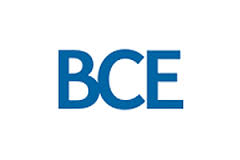
MONTREAL – The acquisition of MTS combined with slowing television and Internet subscribers helped to pull down first quarter profits by 4.4%, BCE said Wednesday.
Net earnings fell to $725 million in Q1 while net earnings attributable to common shareholders dropped 4.0% to $679 million due to higher severance, acquisition and other costs and an increased average number of BCE common shares outstanding, both due to the acquisition of MTS. Excluding severance, acquisition and other costs, net losses or gains on investments, impairment charges and early debt redemption costs, adjusted net earnings increased 3.3% to $758 million.
Operating revenue was up 2.2% to $5.38 billion year-over-year, reflecting service revenue growth for all three Bell operating segments. Product revenue declined 8.0% to $333 million, reflecting intensely competitive mobile handset promotional discounting and lower wireline product sales to business customers, said the company.
BCE's adjusted EBITDA in Q1 grew 2.4% to $2.21 billion, driven by increases of 7.5% at Bell Wireless and 0.4% at Bell Wireline, which reflected a nominal financial contribution from the acquisition of MTS completed on March 17. This was partly offset by a 7.6% drop in adjusted EBITDA at Bell Media due primarily to the loss of simultaneous substitution rights for Super Bowl LI, which caused an $11 million hit to the media business.
The Montreal-based telco gained 35,782 net new wireless postpaid customers, and reported a net loss of 35,110 prepaid subscribers; 22,402 net new Fibe TV customers, and a net loss of 38,065 satellite TV customers; and 14,989 net new high-speed Internet customers. NAS line net losses totalled 103,274.
As a result of the MTS acquisition, Bell's wireless subscriber base increased by 476,932 (including 418,427 postpaid customers), while high-speed internet, TV and NAS subscribers increased by 229,470, 108,107 (including 104,661 IPTV customers) and 419,816 respectively.
Total BCE customer connections across all services, including MTS, totalled 22,075,373 at the end of Q1, up 5.3% from the year before. The total includes 8,946,476 wireless customers, up 8.6% over last year (including 8,144,936 postpaid customers, an increase of 10.0%); total high-speed Internet subscribers of 3,717,270, up 9.0%; total TV subscribers of 2,837,353, up 3.2% (including 1,465,007 Fibe TV customers, an increase of 19.1%); and total NAS lines of 6,574,274, an increase of 0.1%.
“With efficient operation and marketplace discipline, the Bell team's focus on bringing the highest-quality communications to Canadians resulted in service revenue, adjusted EBITDA, and free cash flow growth and a gain of 73,000 new broadband IPTV, Internet and postpaid wireless customers in Q1," said BCE and Bell president and CEO George Cope, in a statement. "Reflecting our mobile network leadership, Bell wireless posted very strong increases in postpaid net subscribers, revenue and adjusted EBITDA. In wireline, ongoing usage growth and competitive discipline in subscriber acquisition for our superior Fibe TV and Internet services delivered residential service revenue growth and our 11th straight quarter of wireline adjusted EBITDA growth. Bell Media's leadership across multimedia segments and ongoing innovation in next-generation platforms like CraveTV resulted in revenue growth despite the impact of unfortunate regulatory decisions and a soft ad market."
BCE also adjusted its guidance targets for 2017 to factor in the effects of the MTS acquisition. It said it expects that revenue and adjusted EBITDA growth will increase to between the 4% – 6% range.
During the company's conference call with financial analysts, CEO George Cope also announced Bell will be launching, in the next four to six weeks, a new video product aimed at cord cutters, shavers or nevers available online, within Bell's wired operating footprint.
"There are customers who are choosing OTT as the way they want to view video and so we want to make sure we’re playing in that space," said Cope. "That’s important for our TV product. It’s important for our media assets and it’s important for our drive towards internet subscriptions."
While Cope wouldn't give specifics, we wonder if it will be similar to the recently launched Pik TV by Telus since the companies both use the identical Ericsson MediaFirst platform to deliver video to subscribers and that's the technology driving Telus' new offering.
"There is clearly a cord cut and cord shave marketplace. I think we’ve seen that, not just in Canada, but in North America," said Cope, "and given we are the leading TV provider in the country and a leading media company in the country, we want to make sure we’re playing in that space, in the footprints where we provide TV today. "
The full details of BCE’s Q1 2017 financial results are available here.



